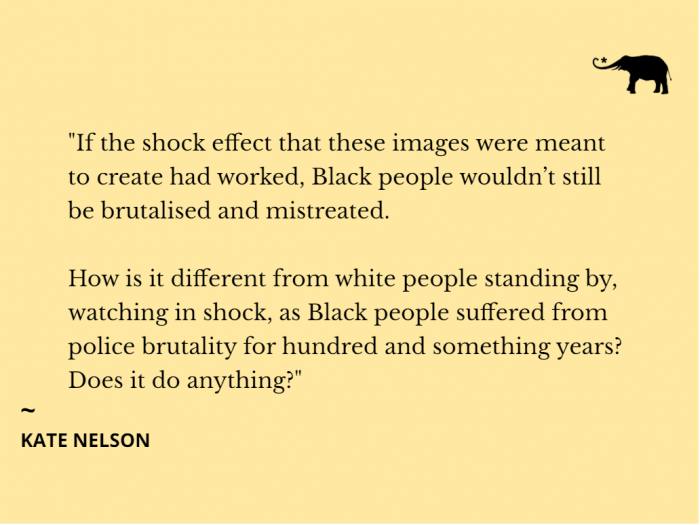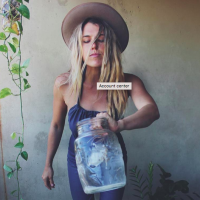What we used to call clickbait is now called porn.
We have clicked this sh*t so much that it has actually traumatised us.
I’m using this as a great opportunity to exercise compassion, enjoy some humor, and agree that all bodies are beautiful. We need to realize that it is the beholder who sexualises them; we need to discuss the evolution of internet “porn” and how it leaked into social justice and environmental campaigns.
So, hear me out.
What is “porn” porn?
Sure, clicking actual sexual images of surgically altered hairless labia has conditioned many men to think all vulvas look like a plastic barbie, often resulting in impotence when faced with natural vulvas.
With an estimated 30,000 online pornography searches every second and the average first exposure to porn is 12.2 years of age, there are, in fact, a lot of humans suffering from genuine porn addiction.
The sheer volume and variety of porn at our fingertips has all sorts of fascinating repercussions, from Porn-Induced Erectile Dysfunction to counselling for young boys who are more attracted to filtered women online than normal, healthy girls their age.
Is it trauma? Ask their partners.
Last week a woman commented “porn” on a story of me in a swimsuit.
While we all had a good laugh about this—considering it’s not even summer yet and with global temps only rising—she has to get used to seeing this scantily clad body waxing on about Earth health.
My body has been sexualised without my consent for as long as I can remember. When I was young, I grew tall and buxom before I even liked boys. I could feel expectation and see something unsettling in the roving eyes of men. Now, I am empowered in my body, comfortable in my boundaries, a finely sharpened weapon of consent, and a version of myself that exudes health, vibrancy, sensuality, and confidence.
If that makes you feel sexy, hell yes! That’s great. Enjoy that!
Take it home to your partner or your personal pleasure practice. Cultivate that sexual energy. That is some powerful creative magic right there.
But I will not tolerate your shaming of my body or judgment of how I show up in this skin. There is enough crushing of spirit from societal conditioning to petty peers to filtered media. I laugh at, not with, this attempt to dull my sparkle.
The main reason I laughed when my bikini body was called “porn” is because a woman’s body is likely a welcome relief amidst feeds swamped with “trauma porn.”
This includes images depicting slaughtered dolphins (guilty), humans swept away in floods, forest fires, and Black people being whipped while trying to cross the border.
For years, I screamed about plastic pollution because people didn’t know. Now that people know, I scream solutions. I rarely show you whales washing up on beaches full of plastic or dead turtles tangled in plastic nets because showing everyone traumatising images—or trauma porn—of dead creatures doesn’t actually move the needle forward.
What is Black trauma porn?
Just this week, I saw people sharing over and over again images of the United States border patrol whipping Haitians on horseback like some slavery wet dream.
Early on, thousands of (white) Americans shared the video of George Floyd’s death. They were aware but “unsure” of how to help dismantle systemic racism that killed George Floyd and so many of the other Black victims of police brutality.
If the shock effect that these images were meant to create had worked, Black people wouldn’t still be brutalised and mistreated.
How is it different from white people standing by, watching in shock, as Black people suffered from police brutality for a hundred and something years? Does it do anything?
Is it not just some form of voyeurism? A sick kind of entertainment about a culturally relevant topic that you get to engage with?
You might feel something around this imagery, and this feeling signals that you are virtuous because, internally, you feel this is wrong. Then, sharing the image that made you feel sad, horrified, shocked, despaired makes you feel like you are better than these men on horseback or like you’re contributing to the solutions.
Is this sharing enough to dismantle systemic racism? Or are you merely perpetuating the suffering? Are you entertaining yourself on the back of Black brutalisation? Does the awareness spread outweigh the trauma suffered by Black communities who had to watch more whites virtue signal allyship simply by reposting some trauma porn? Are whites addicted to watching Black death? Black suffering?
“The purpose of publicly torturing Black bodies, then and now, is to deter Black Americans from challenging white supremacy. And by resharing, liking, or posting videos of Black people being murdered, you’re inadvertently helping to spread that message,” says
White supremacy is the killer of walking free throughout America. Sharing videos of Black deaths created outrage that got police officers arrested and imprisoned, but it did not dismantle the racist system.
In fact, it could be normalising Black Death.
What is climate porn?
A few years ago, people were not convinced that global warming was real. Now, after every nation has experienced devastating fires and floods, it is common knowledge that the climate is changing, and urgent action must be taken.
Years back, a study by the Institute for Public Policy Research accused the government and media organisations of undermining the efforts to tackle global warming by using alarmist language that amounts to “climate porn.”
The report said that such “sensationalism…serves to create a sense of distance from the issue.”
It argued, “Alarmism might even become secretly thrilling—effectively a form of ‘climate porn’ rather than a constructive message. All of this serves to undermine the ability of this discourse to bring about action.”
We get caught up in scrolling through the images of fire-stricken communities, scorched forests, walling women covered in fresh sooted ash, and koalas with bandages on their singed fur.
We are told to bicycle and turn off the tap when we brush our teeth, but the majority of citizens have no idea if the government is sticking to the Paris Agreement—often referred to as the Paris Accords or the Paris Climate Accord—if there is a national climate policy, how much of the country is powered by renewable energy, what regenerative agriculture is, if electric vehicles are available, or that most trees planted to offset carbon emissions is greenwashed capitalism.
To be serious about tackling climate change, companies need to stop carbon emissions from getting into the atmosphere in the first place.
Are we addicted to trauma porn? Is this the cause of eco-anxiety and climate grief? Are we responsible for our own suffering because we have filled our feeds with coverage of natural disasters? Or stressful vaccine debates? Or Black death?
Are we depressed because of our own lack of discipline in curating our social media? Do we need more solutions in our feeds? More cat memes? More happy humans bouncing their butts?
Who can be sure what specifically will counteract the collective heaviness and right the normalised and accepted depression around the future and the environment?
What these discussions do point out is that seeing imagery of mounting plastic pollution is more likely to normalise plastic pollution and create apathy and hopelessness—an acceptance of our failure— rather than inspire the action needed to ban plastics.
Sharing imagery of Black murders is not dismantling racist systems but normalising and perpetuating Black suffering.
Does sharing images of slaughtered dolphins create short, fast, and strong outrage and swell of signatures on a petition to outlaw the dolphin hunt tradition? Will sharing a documentary about the climate crisis inspire people to buy electric cars? Or should we create more solution-oriented media?
I, as a sustainability advocate and “content creator,” have learned—based on data afforded me from the social platforms I employ—that positive, cheeky, playful, solution-based messages are what y’all want from me.
You tell me. Have you changed your habits because of the solutions I share? Or are you motivated when you see Earth’s trauma?
I have chosen a path of solutions with the rare trauma porn.
I have let my masculine, warrior energy subside and allowed feminine compassion to swell into my activism and communication.
I am not saying any of this is right or wrong; we are living in a highly connected, overstimulated, over-messaged time where we are all dogmatic, polarised experts who are vocal, disconnected, busy, stressed, overwhelmed, and apathetic.
As our screen time grows, our feeds fill with climate porn or Black deaths or fake, filtered faces. We must check in with ourselves and critically analyse how our exposure to this wide web of wonders and wounds is affecting our mental health, our outlook, our behaviour, and if it’s motivating us to make any changes or if we’re just getting off on someone else’s suffering.
We’d be better off reading a book by a Black author or planting some veggies in the garden than the mindless scroll.












Read 2 comments and reply